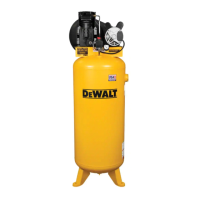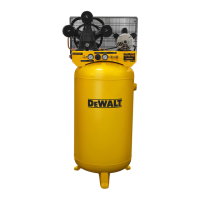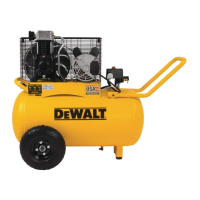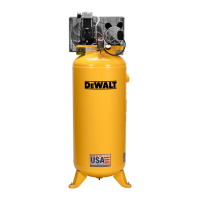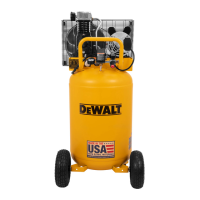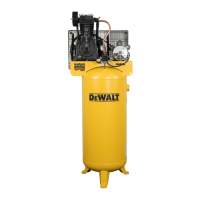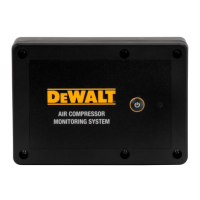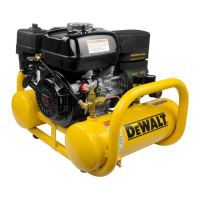11
English
1. Ensure regulated pressure gauge reads 0 psi.
2. Apply sealant tape to hose threads.
3. Assemble hose to air outlet (F). IMPORTANT: Do not assemble
splitters directly to the air outlet (F).
NOTE: Assembling quick connect bodies (L) to air outlet (F)
and quick connect plugs to hose ends make connecting and
disconnecting hoses simple and easy. Quick connect bodies
and plugs are available for purchase from your local dealer or
authorized service center.
DISCONNECTING HOSES
WARNING: Risk of unsafe operation. Firmly grasp hose in hand
when installing or disconnecting to prevent hose whip.
1. Ensure regulated pressure gauge reads 0 psi.
2. Remove hose from air outlet (F).
Lubrication and Oil
AIR COMPRESSOR
The air compressor pump was filled WITH oil at the manufacturer.
Check air compressor pump oil level before operating unit. See
Compressor Pump Oil under Maintenance.
Compatibility
Air tools and accessories that are run off the compressor must be
compatible with petroleum based products. If you suspect that a
material is not compatible with petroleum products, an air line filter
for removal of moisture and oil vapor in compressed air is required.
NOTE: Always use an air line filter to remove moisture and oil vapor
when spraying paint.
Location
• Locatetheaircompressorinaclean,dry,andwellventilated
area.
• Locatedtheaircompressoratleast12” (30.5cm) away from
the wall or other obstructions that will interfere with the flow of
air.
• Locatetheaircompressorasclosetothemainpowersupply
as possible to avoid using long lengths of electrical wiring.
NOTE: Long lengths of electrical wiring could cause power loss
to the motor.
• Theairfiltermustbekeptclearofobstructionswhichcould
reduce air flow to the air compressor.
HUMID AREAS
In frequently humid areas, moisture may form in the pump and
produce sludge in the oil, causing running parts to wear out
prematurely. Excessive moisture is especially likely to occur if
the unit is located in an unheated area that is subject to large
temperature changes. Two signs of excessive humidity are external
condensation on the pump when it cools down and a “milky”
appearance in compressor oil. You may be able to prevent
moisture from forming in the pump by increasing ventilation or
operating for longer intervals.
NOISE CONSIDERATIONS
Consult local officials for information regarding acceptable
noise levels in your area. To reduce excessive noise, use
vibration mounts or silencers, relocate the unit or construct total
enclosures or baffle walls. Contact a D
e
WALT service center or
call 1-888-895
-
4549 for assistance.
Anchoring of the Air Compressor
WARNING: Risk of bursting. Excessive vibration can weaken the
air tank and cause an explosion. The compressor must be properly
